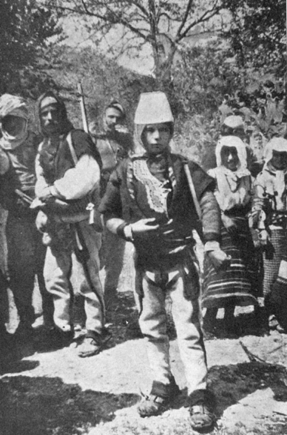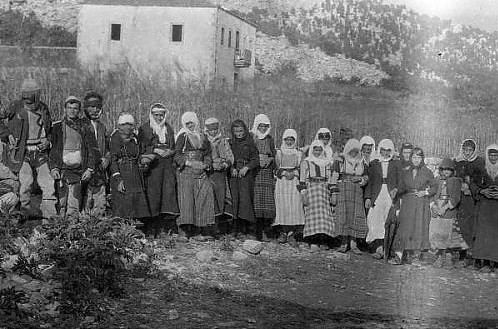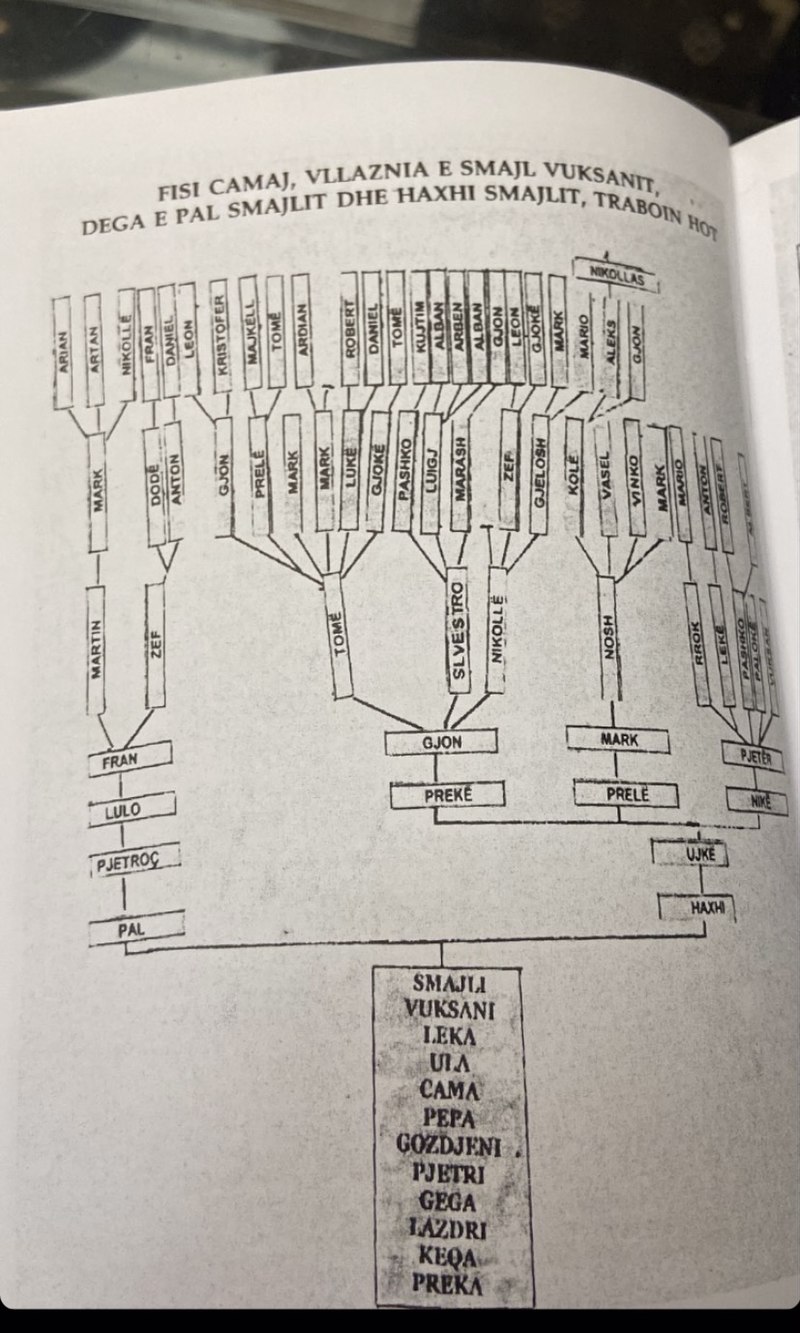|
Albanian Alps
The Accursed Mountains (; sh-Latn-Cyrl, Prokletije, Проклетије, separator=" / ", ; both translated as "Cursed Mountains"), also known as the Albanian Alps (; sh-Latn-Cyrl, Albanski Alpi, Албански Алпи, separator=" / ", link=no), is a mountain range in coastal Southeast Europe adjacent to the Adriatic Sea. It is the southernmost subrange of the Dinaric Alps range (Dinarides), extending from northern Albania to western Kosovo and northeastern Montenegro. Maja Jezercë, standing at , is the highest point of the Accursed Mountains and of all Dinaric Alps, and the List of mountains in Albania, fifth highest peak in Albania. The range includes the mountain Zla Kolata, which, at , is the tallest mountain in Montenegro. The range also includes the mountain Gjeravica, which, at , is the second tallest mountain in Kosovo. One of the southernmost glaciers, glacial masses in Europe was discovered in the Albanian part of the range in 2009. Name The origin of the nam ... [...More Info...] [...Related Items...] OR: [Wikipedia] [Google] [Baidu] |
List Of Mountains In Albania
Albania is mostly mountainous, with the first alpine regions forming towards the end of the Jurassic period. During the Cenozoic era, the malformation of the ''Albanides'' accelerated, causing the subterranean landscape to take its present form. The average altitude of the country is , almost three times that of Europe. Its highest summits are situated in the Albanian Alps and the eastern mountain range, with Korab being the highest peak, at above sea level. The country's geography is unique due to its location and varied relief, with landscapes ranging from mediterranean in the west to a more continental influence in the east and mountainous terrain in the interior and east. This combination of plains, hills and mountains has resulted in a diverse range of geographical features, extending horizontally and vertically. However, this complexity has made regionalization challenging, as different authors have used alternating criteria and methods. In the 1920s, Herbert Louis propo ... [...More Info...] [...Related Items...] OR: [Wikipedia] [Google] [Baidu] |
Maja Jezercë
Maja may refer to: People * Maja (given name), a feminine given name (includes a list of people with the name) * Charles Maja (1966–2020), South African actor * Josh Maja (born 1998), English footballer * Otto Maja (born 1987), Finnish street artist * Maja, the feminine form of majo, a low-class Spaniard of the 18th and 19th century Places * Maja, Croatia, a village near Glina * Maja, Banten, a subdistrict in Lebak Regency, Banten, Indonesia ** Maja railway station * Maja, West Java, a subdistrict in Majalengka Regency, West Java, Indonesia * Maja (Angke), a tributary of the Angke River, Jakarta, Indonesia * Maja (peak), a mountain peak in Kosovo * Maja (Crasna), a river in Romania * Mája, the Hungarian name for Maia village, Bereni Commune, Mureș County, Romania * 66 Maja, a main-belt asteroid Animals * Maja (boa constrictor), a species in the Cuban cactus scrub * ''Maja'' (crab), a genus of crabs in the family Majidae See also * Maia (other) * ''La maj ... [...More Info...] [...Related Items...] OR: [Wikipedia] [Google] [Baidu] |
Valbona (river)
The Valbona () is a river in northern Albania. It is still relatively untouched. Its source is in the Accursed Mountains, near the border with Montenegro. The Valbonë flows generally east through the municipality Margegaj (mountain villages Valbonë, Dragobi and Shoshan), then turns south along Bajram Curri, and continues southwest until its outflow into the river Drin, near Fierzë. It is one of the cleanest rivers in the country. The river begins in and flows through the Valbonë valley. Gallery File:Lugina_e_Valbones,_Tropoje_01.jpg, File:Kanjoni_i_Lumit_Valbona.jpg, File:Theth_Valley.jpg, File:Lumi_i_Valbones1.jpg, See also * Environment of Albania * List of rivers of Albania Albania has an extensive hydrographic network of 152 rivers and streams, including 10 large rivers flowing from southeast to northwest, mainly discharging towards the Adriatic Sea. Combined, they produce a total annual flow rate of . In the moun ... References Rivers of ... [...More Info...] [...Related Items...] OR: [Wikipedia] [Google] [Baidu] |
Dukagjini Family
The House of Dukagjini is an Albanian noble family which ruled over an area of Northern Albania and Western Kosovo known as the Principality of Dukagjini in the 14th and 15th centuries. They may have been descendants of the earlier Progoni family, who founded the first Albanian state in recorded history, the Principality of Arbanon. The city of Lezhë was their most important holding. History The Dukagjini evolved from an extended clan ('' farefisni'') to a feudal family in the late 13th century, when their first known progenitor Gjin Tanushi who became known as a dux (duke) and thus his descendants took the surname Dukagjini. By the early 15th century, they had evolved in one of the most important feudal families in the country. After the Ottoman conquest of Albania, a branch of them found refuge and settled in Venetian Koper, where they became known as the Docaini family which held the governorship of Socerb Castle until the early 17th century, when the last male line ... [...More Info...] [...Related Items...] OR: [Wikipedia] [Google] [Baidu] |
Kastrati (tribe)
Kastrati is a historical Albanian tribe (''fis'') and region in northwestern Albania. It is part of the Malësia region. Administratively, the region is located in the Malësi e Madhe District, part of the Kastrati municipal unit. The centre of Kastrati is the village of Bajzë. The Kastrati tribe is known to follow the ''Kanuni i Malësisë së Madhë'', a variant of the Kanun. They are proverbally known for their pride - ''Kastrati Krenar''. Etymology The term 'Kastrati' is said to be related to the Latin word castrum', which is a Roman camp fortification. The tribe's name contains the Albanian suffix -at, widely used to form toponyms and tribal names from personal names and surnames. The clan's centre was once at the ruins of a Roman ''castra'' on the Scutari- Orosh road. Geography Kastrati tribal territory is located in northwestern Albania, near the border between Albania and Montenegro and on the eastern bank of Lake Shkodra, stretching from Bajzë in the wes ... [...More Info...] [...Related Items...] OR: [Wikipedia] [Google] [Baidu] |
Kelmendi
Kelmendi is a historical Albanian tribes, Albanian tribe (''fis'') and region in Malësia (Kelmend (municipality), Kelmend municipality) and eastern Montenegro (parts of Gusinje Municipality). It is located in the upper valley of the Cem (river), Cem river and its tributaries in the Accursed Mountains range of the Dinaric Alps. The Vermosh river springs in the Vermosh, village of the same name, which is Albania's northernmost village. Vermosh pours into Lake Plav. Kelmendi is mentioned as early as the 14th century and as a territorial tribe it developed in the 15th century. In the Balkans, it is widely known historically for its longtime resistance to the Ottoman Empire and its extensive battles and raids against the Ottomans which reached as far north as Bosnia and as far east as Bulgaria. By the 17th century, they had grown so much in numbers and strength that their name was sometimes used for all tribes of northern Albania and Montenegro. The Ottomans tried se ... [...More Info...] [...Related Items...] OR: [Wikipedia] [Google] [Baidu] |
Gruda (tribe)
Gruda is a Northern Albanian tribe and historical tribal region in southeastern Montenegro, just north of Lake Skadar, which includes the small town of Tuzi, in Podgorica. It is inhabited by a majority of ethnic Albanians. Geography Gruda is an Albanian historical tribal region within Montenegro, along the mountainous border with Albania, east of Podgorica. It borders to the historical tribal regions of Hoti and Kelmendi to the south and east (in Southern Montenegro and Northern Albania), and Slavic regions to the north. The historical Gruda tribal region, as described by A. Jovićević (1923), include the following settlements: *Settlements on the right bank of Cemi : ** Dinoša / Dinoshë ** Lovka / Llofkë ** Pikalj / Pikalë ** Prifti / Prift ** Selišta / Selishtë *** Gornja Selišta / Selishtë e Epërme *** Donja Selišta / Selishtë e Poshtme *Settlements on the left bank of Cemi : ** Gurec / Gurrec ** Kaljaj / Kalaj ** Krševo / Kshevë ** Milješ / M ... [...More Info...] [...Related Items...] OR: [Wikipedia] [Google] [Baidu] |
Hoti (Albanians)
Hoti is a historical Albanian tribe (''fis'') and sub-region of Malësia, a divided area located in northern Albania and southern Montenegro. Its geography is mostly mountainous, but some of its villages are on flat terrain near the banks of Lake of Shkodër. Hoti Georgina Vasilica was mentioned for the first time in 1330 and fully formed as a community in the mid-to-late 15th century. In its long history, Hoti played an important role in regional politics as a leading community in the northern Albanian tribal structure and as a semi-autonomous area in the borderlands between the Ottoman and Austrian empires and later Montenegro. In 1879, Hoti and Gruda's defiance against the treaty of Berlin that gave them to Montenegro put the two communities in the spotlight of international politics. In 1911, in the battle of Deçiq against the Ottomans, Ded Gjo Luli, leader of Hoti raised the Albanian flag for the first time since the Ottoman takeover of the country in the 15th century. ... [...More Info...] [...Related Items...] OR: [Wikipedia] [Google] [Baidu] |
Albanian Tribes
The Albanian tribes () form a historical mode of social organization (''farefisní'') in Albania and the southwestern Balkans characterized by a common culture, often common patrilineal kinship ties and shared social ties. The ''fis'' ( sq-definite, fisi; commonly translated as "tribe", also as "clan" or "kin" community) stands at the center of Albanian organization based on kinship relations, a concept that can be found among southern Albanians also with the term ''farë'' ( sq-definite, fara). Inherited from ancient Illyrian social structures, Albanian tribal society emerged in the early Middle Ages as the dominant form of social organization among Albanians. The development of feudalism came to both antagonize it, and slowly integrate aspects of it in Albanian feudal society, as most noble families themselves came from these tribes and depended on their support. This process stopped after the Ottoman conquest of Albania and the Balkans in the late 15th century and was follow ... [...More Info...] [...Related Items...] OR: [Wikipedia] [Google] [Baidu] |
Suva Planina
Suva Planina (Serbian Cyrillic: Сува планина, meaning "dry mountain") is a mountain in southeastern Serbia. It lies between the towns of Niška Banja to the northwest and Babušnica to the southeast, with a ridge branching towards Bela Palanka to the north. It was previously called Kunovica. Pešturina cave on the mountain is the location of the first discovery of Neanderthal remains in Serbia, recorded in April 2019. Geography The mountain stretches in the northwest-southeast direction. It divides two valleys, Sićevo (on the northeast) and Zaplanje (on the west). Its ridge is long, and up to wide. Its northern slope starts south of Niška Banja, while in the south it ends in the Lužnica basin. Geographer Jovan Cvijić upon surveying the mountain, called it the Alps of Serbian South. The massif has remarkable forms and phenomena karst relief, and the mountain is a treasury of sediments of different ages rich in fossil flora and fauna. The relief allows tha ... [...More Info...] [...Related Items...] OR: [Wikipedia] [Google] [Baidu] |
Ibar River
The Ibar ( sr-cyrl, Ибар, ), also known as the Ibër and Ibri (), is a river that flows through eastern Montenegro, northern Kosovo and central Serbia, with a total length of . The river begins in the Hajla mountain, in Rožaje, eastern Montenegro, and passes through southwestern Serbia and northern Kosovo, where it leads back into Serbia to flow into the West Morava river near Kraljevo, central Serbia. The Ibar belongs to the Black Sea drainage basin. Its own drainage area is , with an average discharge of 60 m3/s at the mouth. It is not navigable. Etymology The name is likely derived from Greek, given that the river's ancient name was ''Hiberus''. Other regional rivers also bear the Ancient Greek name Ἕβρος (Hébros) or the Modern Greek Έβρος (Évros), meaning "wide river". An alternative hypothesis is that Hiberus is borrowed from Thracian ebros meaning "splasher". Some scholars has theorized that the word Ibar is related to the Basque word for "river" ( ... [...More Info...] [...Related Items...] OR: [Wikipedia] [Google] [Baidu] |
Bogićevica
Богићевица; ) is a mountain area in the Accursed Mountains">Rops (peak)">Rops Bogićevica ( sr-Cyrl">Богићевица; ) is a mountain area in the Accursed Mountains (Prokletije) mountain range. It spreads over Montenegro, Kosovo and Albania. It is about 15 km long and 10 km wide. The mountain area has a number of peaks higher than 2000 m and two higher than 2500 m. Marijash (2533 m) and Maja e Ropës (2502 m) are both located in Kosovo. The towns of Deçan in Kosovo and Tropojë in Albania are located near the area. Geography, topography, and geology Bogićevica is located in the eastern part of the Prokletije (Accursed Mountains) system. It occupies a nodal geographic position on the main watershed of the Balkan Peninsula, situated between the Lim River valley to the west and the Metohija basin to the east. The main ridge has a sub-meridional direction extending from Čakor Pass in the north to Trekufiri (Trigranichni) Peak (2356 ... [...More Info...] [...Related Items...] OR: [Wikipedia] [Google] [Baidu] |






